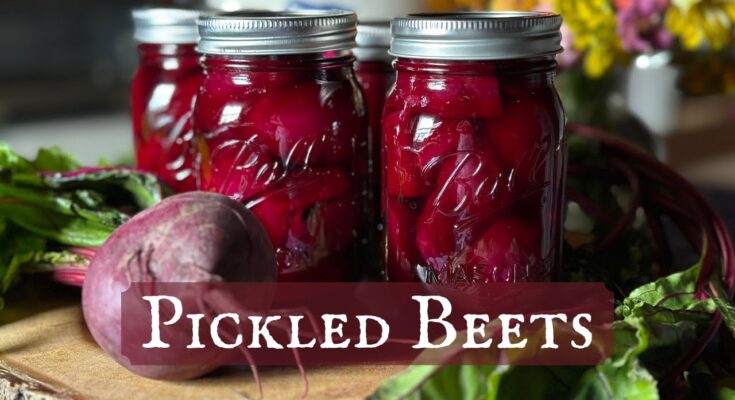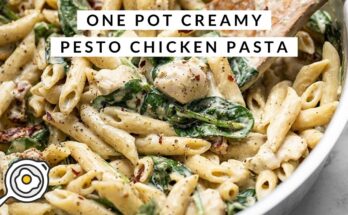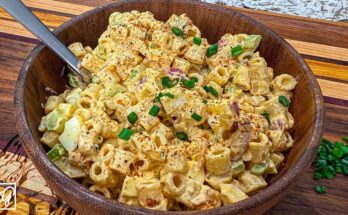Pickled Beets Recipe: Pickled beets are the ultimate blend of sweet, tangy, and earthy flavors. Perfect as a side dish, salad topping, or even a quick snack, these vibrant root veggies pack a punch in both taste and nutrition. Beets are rich in essential nutrients like folate, manganese, and antioxidants. When pickled, they retain their health benefits while developing a delightful tangy flavor.
Did you know pickling beets has been a beloved tradition for centuries? From preserving harvests to creating unique flavors, pickling has stood the test of time.
In this guide, we’ll show you exactly how to make your own pickled beets, step by step. Let’s get started!
Ingredients Needed for Pickled Beets
Before diving into the process, let’s gather all the ingredients you’ll need:
Essential Ingredients:
- 2 pounds of fresh beets
- 2 cups white vinegar (or apple cider vinegar for a milder flavor)
- 1 cup water
- 1 cup granulated sugar
- 1 tablespoon salt
Optional Add-ins for Enhanced Flavor:
- 1 cinnamon stick
- 3-4 whole cloves
- 1 teaspoon mustard seeds
- Sliced onions or garlic (optional for layering in jars)
Feel free to customize these ingredients to suit your taste preferences. The optional spices can elevate the flavor, giving the beets a warm, aromatic profile.
Equipment and Tools Required
To ensure a smooth pickling process, you’ll need some basic kitchen tools:
Must-Have Tools:
- Large pot (for cooking beets)
- Medium saucepan (for preparing brine)
- Cutting board and knife
- Peeler or gloves (for handling cooked beets)
- Canning jars with lids
Additional Helpful Equipment:
- Jar lifter or tongs (for handling hot jars)
- Funnel (for pouring brine)
- Clean kitchen towels
Having these tools on hand will make the process efficient and mess-free.
How to Select and Prepare Fresh Beets
Choosing the Best Beets: When selecting beets, opt for ones that are firm, smooth, and free from blemishes. Smaller beets tend to have a sweeter flavor, while larger beets are earthier.
Washing and Trimming Tips:
- Rinse the beets thoroughly under cool water to remove dirt.
- Trim the greens, leaving about 1-2 inches of stems. This prevents excess bleeding during cooking.
Proper preparation ensures the beets cook evenly and retain their vibrant color.
Preparing the Pickling Brine
The brine is the heart of pickling. Here’s how to create the perfect mixture:
Key Ingredients for the Brine:
- Vinegar provides the tanginess.
- Sugar balances the acidity.
- Salt enhances the flavors.
Steps to Prepare the Brine:
- Combine vinegar, water, sugar, and salt in a saucepan.
- Heat the mixture on medium, stirring until the sugar dissolves.
- For additional depth, toss in cinnamon sticks, cloves, or mustard seeds.
Adjust the sweetness and acidity to match your taste. Prefer it tangier? Add more vinegar. Like it sweeter? Increase the sugar.
Step-by-Step Guide to Making Pickled Beets
Cooking the Beets:
- Place the beets in a large pot and cover them with water.
- Bring to a boil, then reduce to a simmer. Cook for 30-40 minutes or until tender.
- Drain and let them cool slightly.
Peeling and Slicing the Beets:
- Gently rub the skins off with your hands (use gloves to avoid staining).
- Slice or cube the beets according to your preference.
Combining Beets and Brine:
- Layer the sliced beets into sterilized jars.
- Pour the prepared brine over the beets, ensuring they are fully submerged.
Sterilizing and Preparing Jars for Pickling
Sterilizing jars is essential to ensure your pickled beets are safe to eat and last longer.
Why Sterilization is Crucial: It prevents contamination, ensuring your pickled beets remain fresh.
Methods to Sterilize Jars at Home:
- Wash jars with hot, soapy water.
- Boil the jars and lids in water for 10 minutes.
- Dry them thoroughly before use.
Sterilization is a small step that makes a big difference in the quality of your pickles.
Packing Beets into Jars
Once your jars are sterilized, it’s time to pack the beets. This step requires attention to detail to ensure every jar is properly filled and sealed.
Layering for Maximum Flavor:
- Place a layer of sliced or cubed beets into each jar.
- If using optional ingredients like garlic, onions, or spices, add them between the beet layers. This helps distribute the flavors evenly.
Ensuring the Right Amount of Brine:
- Pour the prepared brine over the beets, leaving about 1/2 inch of headspace at the top.
- Use a clean utensil (like a skewer) to remove any air bubbles trapped in the jar.
- Ensure the beets are fully submerged in the brine. If necessary, top up with additional brine.
Packing the jars properly preserves the freshness and flavor of the beets, so don’t rush this step.
Sealing the Jars
The sealing process is critical for long-term storage and preventing spoilage. Here’s how to do it correctly:
Properly Sealing Jars to Preserve Freshness:
- Wipe the rim of each jar with a clean, damp cloth to remove any residue.
- Place the lids on top and secure them with the bands until they are fingertip tight (don’t overtighten).
Testing the Seal for Effectiveness:
- If you’re water-bath canning, place the jars in a pot of boiling water, ensuring they are fully submerged. Process for 10-15 minutes.
- Remove the jars carefully and let them cool on a towel-lined surface for 12-24 hours.
- Check the seals by pressing the center of the lids. If the lid doesn’t pop back, the jar is sealed correctly.
Sealing properly ensures your pickled beets are shelf-stable and safe to enjoy for months.
Storage and Shelf Life of Pickled Beets
Now that your jars are sealed, where and how should you store them?
Ideal Storage Conditions:
- Keep the jars in a cool, dark place, such as a pantry or cellar.
- Avoid direct sunlight or excessive heat, which can compromise the seal and flavor.
How Long Pickled Beets Last:
- Properly sealed jars can last up to a year in storage.
- Once opened, store in the refrigerator and consume within 2-3 weeks for the best flavor.
Regularly check your jars for any signs of spoilage, such as discoloration, mold, or an unsealed lid.
How to Serve Pickled Beets
Pickled beets are versatile and can elevate a wide range of dishes. Here are some ideas:
Pairing Ideas and Serving Suggestions:
- Salads: Toss pickled beets into green salads or grain bowls for a burst of color and tangy flavor.
- Sandwiches: Add sliced pickled beets to sandwiches or wraps for a sweet and sour kick.
- Appetizers: Serve them alongside cheese, crackers, or cured meats on a charcuterie board.
Incorporating Pickled Beets into Recipes:
- Blend them into hummus for a vibrant, earthy dip.
- Use them as a topping for roasted vegetables or mashed potatoes.
- Add to pickled beet brine for making salad dressings or marinades.
Get creative and experiment—there’s no wrong way to enjoy pickled beets!
Common Mistakes to Avoid
Even seasoned cooks can make mistakes when pickling beets. Avoid these common pitfalls:
Overcooking the Beets: Overcooked beets can become mushy and lose their texture. Aim for tender but firm consistency.
Misbalancing the Brine: Too much vinegar can overpower the sweetness, while too little can result in a flat taste. Follow the recipe closely and adjust to taste as needed.
Skipping Sterilization: Failing to sterilize jars can lead to contamination and spoilage. Always take the time to properly clean and sanitize your jars.
By keeping these tips in mind, you’ll be well on your way to flawless pickled beets.
Tips for Experimenting with Flavors
One of the best parts of making pickled beets at home is the ability to customize the flavors. Here’s how:
Adding Herbs and Spices:
- Experiment with dill, thyme, or rosemary for a savory twist.
- Add a pinch of chili flakes for a spicy kick.
Using Different Vinegars:
- Try red wine vinegar for a deeper flavor or rice vinegar for a milder tang.
- Balsamic vinegar can add a sweet, complex dimension to the brine.
Each adjustment can create a unique flavor profile, so don’t be afraid to get creative!
FAQs about Pickled Beets Recipe
1. What ingredients do I need for a pickled beets recipe?
To make pickled beets, you’ll need fresh beets, white vinegar, water, sugar, and optional spices like cloves, cinnamon sticks, and allspice. Some recipes might also call for onions or mustard seeds for added flavor.
2. How long does it take to pickle beets?
The actual preparation time is relatively short, about 30 minutes, which includes peeling and slicing the beets. However, for the beets to fully absorb the flavors and achieve a good pickle, it usually takes about 7 days in the refrigerator.
3. Are pickled beets healthy?
Yes, pickled beets are healthy! Beets are high in vitamins and minerals and low in calories. Pickling them can add sodium but also increases the shelf life and enhances the flavor, making it a nutritious and tasty addition to many meals.
4. Can I use apple cider vinegar instead of white vinegar?
Absolutely! Apple cider vinegar can be used as a substitute for white vinegar in pickling beets. It will give a slightly different flavor profile, which many find to be a delicious variation.
5. How long do pickled beets last?
When stored properly in airtight containers in the refrigerator, homemade pickled beets can last up to 2-3 months. Ensure the beets are fully submerged in the pickling liquid to maintain freshness.
6. What can I serve with pickled beets?
Pickled beets are versatile and can be served with salads, sandwiches, as part of a charcuterie board, or as a standalone side dish. They pair wonderfully with goat cheese, arugula, and nuts for a delightful salad.
Conclusion
Making pickled beets at home is a rewarding process that delivers a delicious, versatile treat. With the right ingredients, tools, and techniques, you can create a batch that’s bursting with flavor and perfect for any occasion. Follow this step-by-step guide, experiment with spices, and enjoy the fruits of your labor in salads, sandwiches, or straight from the jar!



